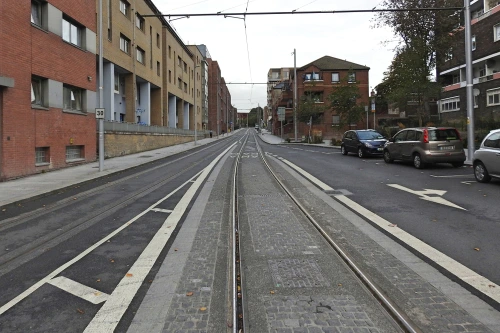
Dublin City Council and IES, a net-zero technology company, have teamed up to carry out a digital twin project aimed at decarbonising Dublin’s social housing stock in an efficient manner.

The project employed IES’s digital twin technology, which created a virtual replica of three residential blocks located on Lower Dominick Street. The digital twin models were then used to simulate four renovation strategies over three different time periods, with the goal of optimising the regeneration of these buildings, which were built in 1962 and currently lie vacant.
The project adopted a whole-life carbon approach, taking into account both embodied and operational carbon. Embodied carbon refers to the emissions linked to construction and materials throughout a building’s life cycle, a crucial aspect of sustainable building analysis often overlooked. By calibrating data from the existing energy bills of the social housing site, the main sources of energy consumption were identified to determine the strategy that would result in the greatest reduction in whole-life carbon emissions.
Dublin City Council Climate Resilient Housing Report
The study assessed four renovation strategies, from shallow retrofit to demolition and rebuild, and aimed to align with Dublin City Council’s climate targets for 2030, 2050 and beyond. The results, which are included in the Dublin City Council Climate Resilient Housing Report, revealed that the most effective renovation strategy for social housing was Deep Retrofit, which could lead to an approximately 85% reduction in cumulative emissions over a 60-year life period.
This project was funded by the Department of Public Expenditure and Reform’s Public Sector Innovation Fund, with IES and Dublin City Council partnering to create the digital twin. The project’s findings will aid Dublin City Council in meeting its retrofitting and emissions reduction targets for social housing and housing delivery targets. Furthermore, as the government imposes more targets to tackle climate change, new systems must be developed to evaluate the strategies for derelict buildings.
The success of the project has led to the hope that it can be expanded to other sites in Dublin and beyond to assess the carbon impact of renovation projects. By providing evidence-based decisions on the most optimal whole-life carbon regeneration strategy for the refurbishment of ageing social housing buildings, this project looks to pave the way for a more sustainable future.
“This project has demonstrated the results that can be achieved through working collaboratively, exchanging knowledge to drive innovation and meet targets,” said Sabrina Dekker, climate change coordinator at Dublin City Council. “IES’s digital twin technology has enabled us to confirm the importance of retrofitting to reduce our emissions and we hope that the results can be utilised to inform future projects.”
[Read more: Rightsizing: Cork City Council to increase awareness of specially designed housing for older people]






